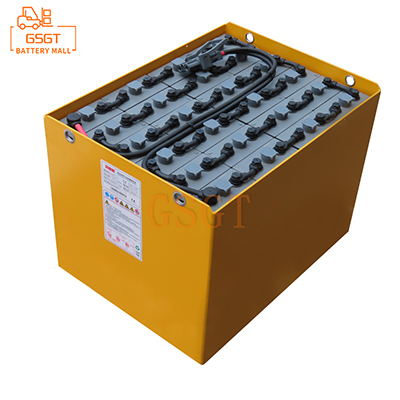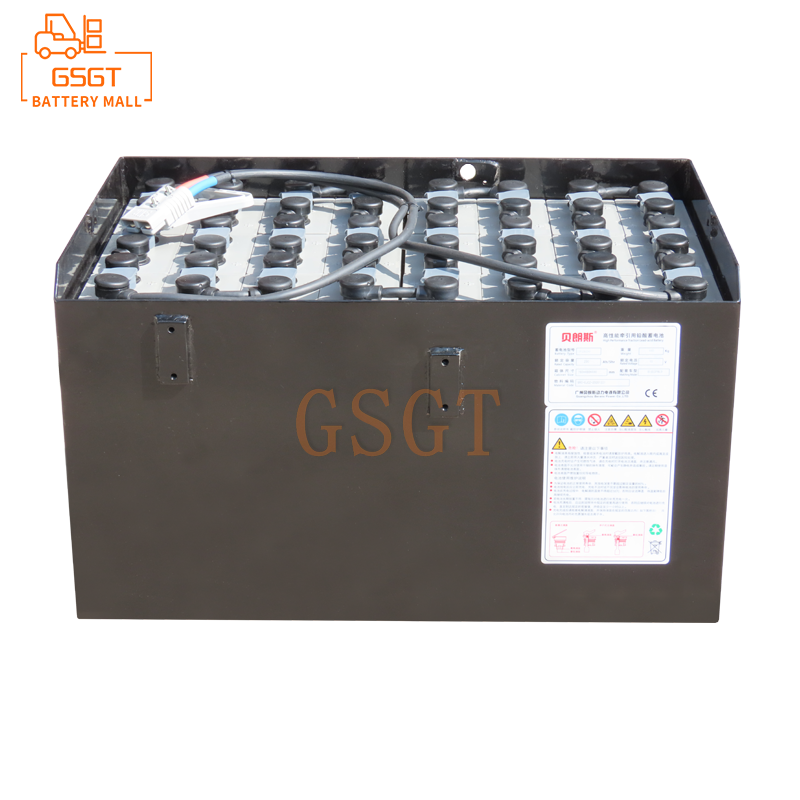Time:2025-03-05 11:10:33
Browse:345
In the field of industrial logistics, forklift as the core equipment of cargo handling, its power source - the stable supply and reasonable cost of forklift battery is very important. Recently, the price of lead has soared like a rocket, bringing unprecedented cost pressure to forklift battery companies. In this severe challenge, the "old for new" model is regarded as a key means for enterprises to break the situation, but whether it can really turn the tide needs in-depth analysis.
Lead, as the main raw material for forklift lead-acid batteries, its price trend directly determines the battery production cost. The price of lead started a crazy rise pattern a year ago, and the rise was amazing. According to industry statistics, in just one month, the price of lead has risen by more than 20%, reaching a historical high in recent years. This change makes forklift battery companies miserable, and the cost of raw materials increases significantly for each group of batteries produced. Taking a common forklift lead-acid battery as an example, when the lead price is stable, the raw material cost accounts for about 60%, and with the soaring lead price, this proportion jumps to more than 70%. Corporate profit margins are ruthlessly compressed, and some small and medium-sized forklift battery companies even hover on the edge of loss.
Faced with the cost dilemma, forklift battery companies initially tried to transfer the pressure by increasing the price of their products. However, the market's response was like a basin of cold water, which instantly extinguished the hopes of enterprises. In the highly competitive forklift battery market, customers are extremely price sensitive. Once the price of the product is raised, the purchase volume drops sharply. Many companies that originally had procurement plans have postponed orders and turned to seek more cost-effective alternatives, which makes the revenue of forklift battery companies not only fail to improve, but also show a downward trend, and the traditional price increase strategy has failed.
In this desperate situation, the "old for new" model has gradually become the focus of the industry. The so-called "old for new", that is, when the customer buys a new forklift battery, the old battery is handed over to the company, and a certain amount of price concessions can be enjoyed. This model seems simple, but it contains multiple advantages, which is expected to bring a turning point for enterprises.
From the point of view of resource recycling, waste forklift batteries contain a large number of recyclable metal resources such as lead. After professional treatment, this recycled lead can be put back into production as a raw material for new batteries. Relevant data show that for every 1 ton of waste forklift lead-acid batteries recovered, about 0.8 tons of lead can be extracted, which is fully in line with production standards after refining. This not only eases the dependence of enterprises on primary lead ore, but more importantly, effectively reduces the cost of raw material procurement. It is estimated that the use of recycled lead to produce batteries can reduce the cost of compared to the use of raw lead. For forklift battery companies struggling with costs, this is undoubtedly an attractive cost reduction path.
From the perspective of market expansion, the "old for new" model can stimulate customers' desire to buy. For forklift enterprises, part of the cost can be deducted through the old battery when purchasing a new battery, reducing the financial pressure. Especially for those who are in high demand for equipment replacement, but are limited by cost, "trade-in" provides a more affordable option. This helps forklift battery companies to expand the market, increase product sales, and to a certain extent make up for the loss of profits caused by rising costs.
Some forklift battery companies have taken the lead in trying the "old for new" model, and have achieved certain results. A company in the nationwide large-scale promotion of "old for new" activities, with major forklift leasing companies, logistics companies to establish close cooperation. By setting up a dedicated recycling outlet and simplifying the recycling process, the company recycled thousands of used batteries in the first month of the campaign. After processing, these recycled batteries save a lot of raw material procurement costs for enterprises. At the same time, with the price advantage brought by "old for new", the sales volume of enterprise products increased by 15% year-on-year, and the market share was effectively consolidated.
Another company has built an online "trade-in" service platform with the help of digital means. Customers only need to enter the forklift battery model, service life and other information on the platform, and can quickly obtain the recycling price of old batteries and new batteries. The platform also provides on-site recycling services, which greatly enhances the customer experience. This innovative initiative has attracted many new customers, especially some small logistics companies that focus on convenience. Through the online platform, the company successfully expanded the market channel, and still achieved steady growth in performance under the predicament of soaring lead prices.
However, the "old for new" model also faces many challenges in the process of implementation. At present, the forklift battery recycling market is relatively chaotic, and a large number of illegal small workshops are filled with them. These small workshops have simple equipment and backward technology, but by virtue of low-price competition, they have seized a large number of waste battery resources from regular enterprises. According to industry surveys, about 30% of used forklift batteries flow into illegal recycling channels. This not only leads to the lack of raw materials supply of regular forklift battery enterprises, but also because of the improper treatment of waste batteries by small workshops, causing serious environmental pollution and disrupting the market order.
In addition, the promotion of "old for new" activities requires a large investment. Some forklift enterprises are not familiar with this model, or even misunderstood, worried that the recycling price of old batteries is unreasonable, and the quality of new batteries can not be guaranteed. This makes enterprises need to spend a lot of energy and cost on market education in the promotion process to improve customer awareness and acceptance. Moreover, the recycling of waste forklift batteries involves multiple links such as transportation, storage, and disassembly, and each link has certain risks. For example, the battery may leak during transportation, causing pollution to the environment; If the storage process is not properly managed, the battery may be damaged, affecting the recycling value. These risks put forward high requirements for the operation and management ability of enterprises.
In order to make the "old for new" model better help forklift battery companies break, the government, enterprises and industry associations need to work together. The government should strengthen the crackdown on illegal recycling, strengthen market supervision, and standardize the market order of waste forklift battery recycling. Through the introduction of relevant policies, such as giving tax incentives and subsidies to formal recycling enterprises, enterprises are encouraged to actively participate in the recycling of waste batteries. Enterprises themselves should continue to optimize the "old for new" model to improve recycling efficiency and service quality. Increase investment in technology research and development, improve the technical level of waste battery recycling, and reduce recycling costs. At the same time, strengthen the communication with customers, through a variety of channels to promote the advantages of "old for new", to eliminate customer concerns. Industry associations should play a bridging role, strengthen industry self-discipline, promote information sharing and cooperation between enterprises, formulate unified industry standards, and promote the standardized development of the "old for new" model.
In the severe situation of soaring lead prices, the "old for new" model provides a potential path for forklift battery companies to break the game. Despite the challenges, as long as all parties work together to continuously improve the model, it will play a greater role in the development of the forklift battery industry to help enterprises break through the dilemma and achieve sustainable development.

$3405

$1600

$1760

$1500

MESSAGE
Professional And Efficient
Security
Affordable Price
Professional Services